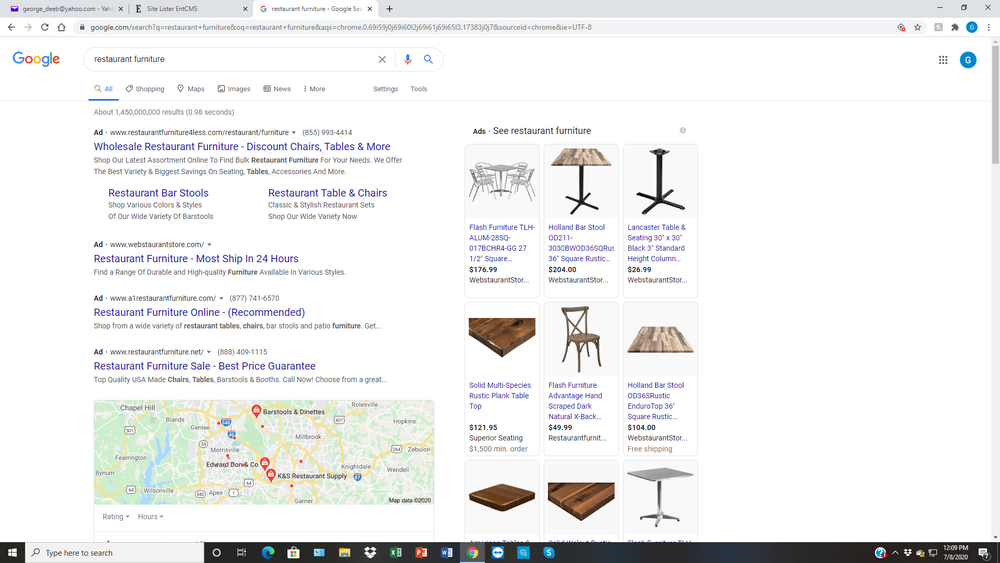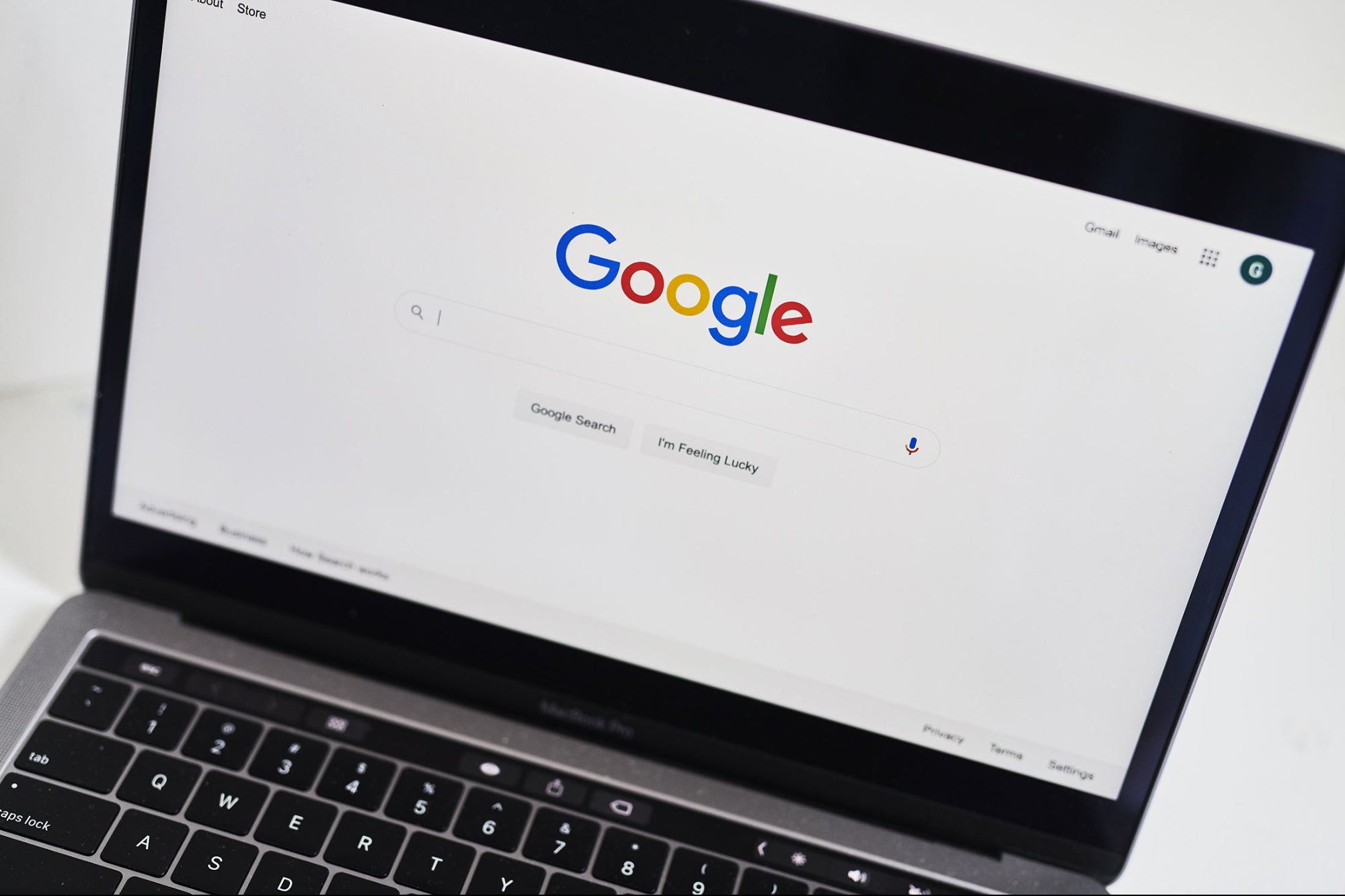7 min read
Opinions expressed by Entrepreneur contributors are their own.
I have been a digital marketer for more than 20 years, which seems like an eternity at this point. Google has always been a staple of any good digital marketing strategy, especially for search engine optimization (SEO), to attract free organic traffic based on the quality of the content on your page. But, when we recently started to see our SEO traffic start to decline, we asked our SEO consultant to investigate the root cause. He said it was due to a recent Google Search page redesign, moving the free organic links to the bottom of the search results page. Even more troubling was his answer on how to fix the situation.
“Start spending more money advertising with Google to get back up to the top of the page,” he said. That’s a very strange thing for an SEO expert to say because his services aren’t needed in that scenario. This means SEO as a strategy for ecommerce-driven companies is dying, and paid search marketing has become your primary way to gain an audience through the search engines, at least through industry-leading Google. Allow me to further explain.
Related: Want to Rank Higher in Google and Amazon Search? This $29 Course Can Help.
A quick history of Google Search
Ever since Google hit the scene in 1998, it has been a staple of any good digital marketing strategy. Originally, it was simply having a good SEO plan to help you go up the free organic rankings — ideally to the top of the first page of the search results. Search results were very straight forward and uncluttered and looked similar to the example below. Only free organic results appeared, based on the content of your page, and its relevancy to the keyword being searched. In the example below, I did a search for the word “technology.”

Then, in 2000, Google launched Google AdWords (now called Google Ads), which was a means to “buy” your way to the top of the search results with paid text ads. This meant you needed both a good SEO strategy for free organic traffic (for the links at the bottom of the first page) and a good keyword bidding strategy for paid traffic (for the links at the top of the first page), as seen in this example search result for the keyword “text.”

Then, in 2002, Google launched Google Shopping, which gave ecommerce companies the opportunity to feed their product listings to Google on a pay-per-click model, adding a third dimension to their mix, but largely separated into its own “Shopping” tab on Google. At the time, it didn’t really impact traditional search results at all. And finally, in 2004, Google launched Google Local, which allowed businesses with multiple retail locations the ability to advertise and promote their various locations, in addition to the corporate parent company. This change simply localized the advertising to the location of the user. Instead of seeing a national ad, they saw an ad for a nearby local business. Again, it really didn’t materially impact the page design.
Google today
But, in the last several months, Google has materially changed its page design for Google Search. Previous “sacred ground” rules like “stay true to our organic search roots, and don’t clutter the page with a bunch of advertising” got completely flushed down the toilet, as you can see in this example of a keyword search result for “restaurant furniture.”

Notice what has happened to the page design. Today, there are no free organic search results anywhere to be seen on the first page above the fold (where the computer screen breaks the page). Every single link on the top of the page is now a paid advertisement. The links in the upper left are coming from Google Ads, the links in the lower-left map are coming from Google Local and the links on the right coming from the Google Shopping product feed. Every single one is a paid placement, which is great for Google maximizing their ad revenues. But, if you want to see an organic search result that is truly based on the quality of the content of the landing page, you need to scroll down “below the fold,” and even then, they don’t start until the bottom of that second screen view after you page down.
Related: Online Content Monetization 101: How to Make Money From Content
The death of SEO
So, what does this all mean for commerce companies selling products or services? It means search engine optimization as a strategy is on life support and near death. Most Google users focus on the first page of results. If there is no way to get your organic search result in that position based on the current Google page design, then why focus on SEO at all? Your focus needs to be on shelling out a lot of money to Google to make sure your business is promoted in Google Ads, Google Local and Google Shopping placements on the page. This is exactly what Google wants — their cash register to ring with each click on their site.
Now that paints a pretty extreme picture. Yes, you can still be doing traditional SEO for organic rankings, especially for sites other than Google, like Bing and Yahoo. Yes, there are still a few Google users who will scroll down the first page, and an even smaller amount of users that will click beyond the first page, to page two or three. But, the amount of SEO traffic you will receive from free organic SEO efforts has become materially less than you would have received prior to the Google page redesign, especially given its dominant market share position in the search industry.
Also worth adding, Google is using its new page design on its largest trafficked search terms (e.g., “restaurant furniture”). There may still be SEO value by focusing on long-tail search terms where Google uses a more traditional search result page design, like the example below for “30 x 30 tabletop.”

However, I think it’s only a matter of time before Google figures out how to take over advertising on every single one of their page results, including the long-tail keywords. Even in the above example, Google Shopping has five paid links at the top of the page, Google AdWords has one paid link in the middle of the page and there are only two free organic results at the bottom of the first page.
Related: How to Identify the Best Long-Tail Keywords
Concluding thoughts
As you are trying to figure out how best to spend your limited marketing dollars, the 20-year staple of optimizing your website for free organic traffic has become a much less effective use of your time and efforts. It just doesn’t bring the same bang for the buck that it used to, which means it is much harder to drive an ROI. Whether or not this helps or hurts Google in the long term will be determined in the future. But, you can bet Google’s competitors, like Duck Duck Go, are going to try to win over internet searchers with their largely free organic search results (which you can see this below example for “restaurant furniture”) promoted as protecting your privacy from the evil Google advertising empire.

Let’s see if Google’s attempt to fleece all of its advertisers for even more money and clutter up its user experience will open up a door for one of their competitors to start growing share in the search industry. But, until then, the grim reaper is sharpening his blade for the SEO industry. R.I.P. my dear friend.
loading…
